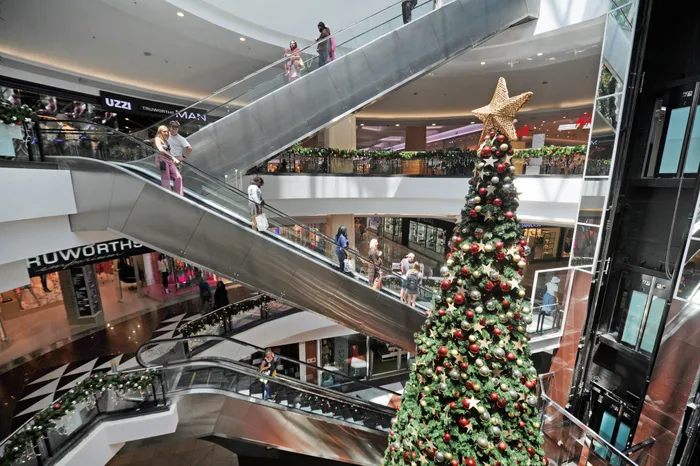
Belinda Clur, managing director of Clur International, said continuing growth across all retail centre formats is being driven by a strong and increasing desire for human medicine via physical social and community interaction.
Image: Supplie
South Africa's retail centres are witnessing significant growth across all formats, propelled by an evolving consumer desire for connectivity and human interaction in a landscape marked by rapid transformation.
This is according to the Clur Shopping Centre Index for the second quarter of 2025, which is derived from the Clur Collective, a recognised platform dedicated to analysing shopping centres and optimising returns.
It tracks performance for listed and unlisted property funds at more than 5.4 million square metres of prime retail space in over 130 centres across South Africa and Namibia.
The findings outlined in the Clur Shopping Centre Index reveal a robust performance that surpasses inflationary pressures.
Belinda Clur, managing director of Clur International, said that since the Covid-19 pandemic, consumer behaviours and preferences have rapidly shifted, significantly influencing the retail landscape.
“We are now living in the Belief Economy where trusted emotional and human connection has become the new currency. Many elements of this economy are evident in the growth of social impact retail in South Africa, serving hard-pressed communities and acting as catalysts for further development and community growth,” Clur said.
“At another level we are seeing the lipstick effect as another element at play – where consumers favour small indulgences to lift their mood when budgets are tight. Health and wellness focused services are in demand, such as hair, nail and body treatments. This signals the need for the personal touch element in a world of screen fatigue.”
The report highlights the emergence of the ‘lipstick effect’, which suggests consumers are turning to small indulgences as a pick-me-up amid tighter budgets. Services centred on health and wellness—such as hair, nail, and body treatments—are increasingly sought after, reflecting a need for personal interactions in an era dominated by digital experiences.
According to the Q2 2025 Clur Index, annualised trading density growth for all centres stood at 4.4%, outperforming June 2025's Consumer Price Index (CPI) by 1.4%.
Regional centres—defined as having a lettable area between 50 000 to 100 000 square metres—demonstrated particularly strong performance, registering an impressive growth rate of 4.9%.
Community and smaller centres led the growth chart with a remarkable 5.5% increase, further signalling the resilience and adaptability of the sector.
Overall, the second quarter concluded with a national trading density of R41 679 per square metre, while super-regional centres achieved the highest trading densities at R51 012 per square metre.
Clur revealed that the Western Cape was the standout performer, boasting a 6.2% annualised growth in trading density, thereby surpassing June’s CPI by 3.2%. Gauteng and KwaZulu-Natal followed, with growth rates of 4.8% and 2%, respectively.
Furthermore, the index indicates a harmonious alignment between trading densities and base rents, creating a balanced market for landlords and retailers for the first time in years.
The national base rent reflected a year-on-year growth of 4.3%, concluding at R236.59 per square metre—higher growth rates were noted in regional centres (5%) and super-regional centres (4.7%).
Clur said that this evolution in retail aligns with broader societal shifts, as shopping centres adapt from traditional roles to embrace more integrated and community-centric concepts.
She said the transition from ‘chameleon’ centres—those defined by fluid and changeable formats—to ‘trusted’ shopping centres mirrors changing consumer preferences and a collective yearning for authenticity.
“Shopping centres have moved with the times. Within the last decade, strategic concepts evolved from a ‘chameleon’ to a ‘hybrid’ to an ‘enlightened’ and now to a ‘trusted’ shopping centre positioning,” she said.
“The pre-pandemic chameleon centre marked a move to fluid rather than fixed formats, comprising an ever-changing, high impact and interactive experiential environment. The hybrid centre took this further during the Covid-ravaged years.
“At this time, trading densities and rentals plunged, and the rent to sales ratio soared. Accordingly, this concept embraced the need for a new agile mixed-use format including retail, storage warehousing and showrooms.”
As retail continues to adapt, Clur emphasises that the current landscape prioritises meaningful values over superficial engagement.
“In an age where social media and artificial intelligence dominate, consumers increasingly seek sincerity and genuine connections—this is the new currency of the market,” she said, emphasising the shift away from aggressive promotional tactics to a focus on trust and emotional resonance.
BUSINESS REPORT